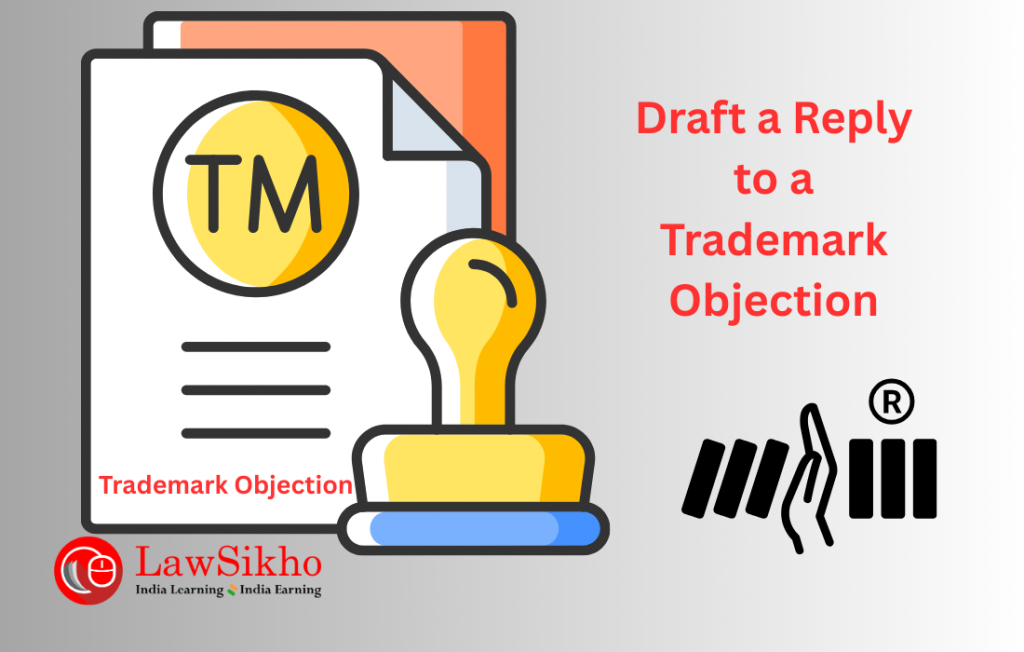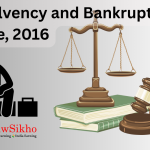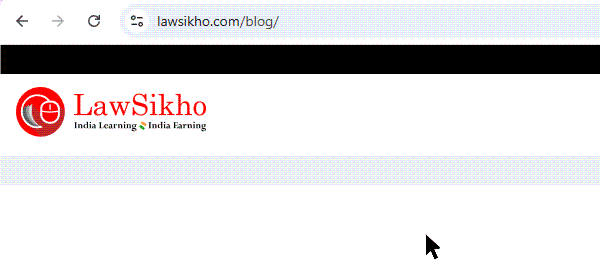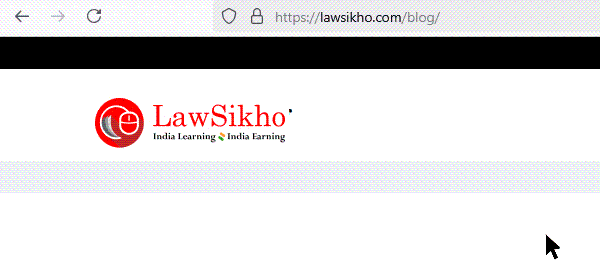In this article, you will dive into the world of trademark objections in India. You will learn what it means when the Trade Marks Registry sends you a not-so-scary objection notice. I will walk you through figuring out why your trademark got flagged, collecting proof like sales or Insta posts to show your brand’s legitimacy, and whipping up a solid reply in just 30 days.
Table of Contents
Introduction
Manohar was contemplating starting a t-shirt business. When he told me about it, I did not think much of it because everyone had a side hustle these days. But then he showed me the designs, plain cotton tees made from recycled plastic bottles, bags, straws, etc. They are stitched with surprising detail; each tag stamped with the brand name “Reweave .”
I watched him go from weekend seller to full-time founder, and he had gathered a customer base in a matter of months. Six months ago, he called me with big news: he had filed a trademark for Reweave in order to protect his brand and be seen more nationally.
But last week, Manohar messaged me, it read: “CRISIS. TRADEMARK OBJECTION. WHAT DO I DO?”
What is a trademark objection anyway?
Before that, what is a trademark?
According to section 2(1)(zb):
“Trade mark means a mark capable of being represented graphically and which is capable of distinguishing the goods or services of one person from those of others and may include shape of goods, their packaging and combination of colours”
If you have ever filed a trademark in India and gotten an objection, then you probably know the feeling. Everything seems fine for a while. Then out of nowhere, you get a formal-looking PDF from the Trade Marks Registry. It is called an Examination Report, and tucked inside is something called a Trademark Objection.
Now, let us get one thing clear. An objection is not a rejection.
It just means the Trademark Examiner has found an issue with your application. It could be something as simple as your mark sounding too generic. Or it could be because it looks too similar to an already registered trademark. At this stage, they are only looking for an explanation from your end.
These objections usually fall under two sections of the Trade Marks Act, 1999:
Section 9, which deals with absolute grounds like the mark being too descriptive or lacking distinctiveness. It says:
(a) which are devoid of any distinctive character, that is to say, not capable of distinguishing the goods or services of one person from those of another person;
(b) which consist exclusively of marks or indications which may serve in trade to designate the kind, quality, quantity, intended purpose, values, geographical origin or the time of production of the goods or rendering of the service or other characteristics of the goods or service;
(c) which consist exclusively of marks or indications which have become customary in the current language or in the bona fide and established practices of the trade, shall not be registered:
Provided that a trade mark shall not be refused registration if before the date of application for registration it has acquired a distinctive character as a result of the use made of it or is a well-known trade mark.
(2) A mark shall not be registered as a trade mark if–
(a) it is of such nature as to deceive the public or cause confusion;
(b) it contains or comprises of any matter likely to hurt the religious susceptibilities of any class or section of the citizens of India;
(c) it comprises or contains scandalous or obscene matter;
(d) its use is prohibited under the Emblems and Names (Prevention of Improper Use) Act, 1950 (12 of 1950).
(3) A mark shall not be registered as a trade mark if it consists exclusively of–
(a) the shape of goods which results from the nature of the goods themselves; or
(b) the shape of goods which is necessary to obtain a technical result; or
(c) the shape which gives substantial value to the goods.
Section 11 covers relative grounds, like your mark being deceptively similar to someone else’s. It says:
(1) Save as provided in section 12, a trade mark shall not be registered if, because of–
(a) its identity with an earlier trade mark and similarity of goods or services covered by the trade mark; or
(b) its similarity to an earlier trade mark and the identity or similarity of the goods or services covered by the trade mark, there exists a likelihood of confusion on the part of the public, which includes the likelihood of association with the earlier trade mark.
(2) A trade mark which–
(a) is identical with or similar to an earlier trade mark; and
(b) is to be registered for goods or services which are not similar to those for which the earlier trade mark is registered in the name of a different proprietor, shall not be registered if or to the extent the earlier trade mark is a well-known trade mark in India and the use of the later mark without due cause would take unfair advantage of or be detrimental to the distinctive character or repute of the earlier trade mark.
(3) A trade mark shall not be registered if, or to the extent that, its use in India is liable to be prevented–
(a) by virtue of any law in particular the law of passing off protecting an unregistered trade mark used in the course of trade; or
(b) by virtue of law of copyright.
(4) Nothing in this section shall prevent the registration of a trade mark where the proprietor of the earlier trade mark or other earlier right consents to the registration, and in such case the Registrar may register the mark under special circumstances under section 12.
In Manohar’s case, the objection was under section 9. The Examiner said “Reweave ” was descriptive and not capable of distinguishing his goods from others.
Manohar was confused. “But I made it up,” he said. “I have got customers, an Instagram following, and even eco-influencers wearing my stuff.”
He had a point. But that alone was not going to convince the Registry. We had to respond, and we had to do it fast.
Manohar reads the objection report
The objection report was about four pages long. Manohar sent it to me with a message that just said, “What does this even mean?”
So, I opened it. The language was classic legalese—
“The applied-for mark appears to be devoid of any distinctive character and is descriptive in nature under the meaning of section 9(1)(b)…”
Here is what it meant: the Examiner thought “Reweave ” was too descriptive. According to them, it is just something anew.
“But that is the whole point!” Manohar said. “It is a material that is reworked. And that is literally my brand.”
I explained that this was not the end. Not even close. We just had to respond properly and show them why “Reweave ” deserved that ® symbol.
How to respond to a trademark objection: Step by step
1. Understand the grounds of objection
This is where things get technical. But bear with me because it matters.
When you receive an objection, the first thing you do is figure out why you got it in the first place. That means identifying whether the objection is under section 9 or section 11.
It can either be about marks that are too descriptive, generic, or non-distinctive. Words like “Fresh Milk” for a dairy company will trigger this. And the other one would mean that your mark is clashing with someone else’s. Either it looks too similar, sounds too similar, or is likely to confuse consumers.
Once you know what the issue is, you can start building your case.
In Manohar’s case, we were clearly dealing with a section 9 issue. So our goal was to show that “Reweave” had acquired distinctiveness and that people already recognised it as a brand, not just a concept.
2. Gather evidence of use
This is where many applicants fall short. They try to argue purely on legal points. But in trademark law, proof matters.
I told Manohar to send me everything he had, such as:
- Screenshots of his Instagram page,
- Photos of the t-shirts with the Reweave tag,
- Invoices from early buyers,
- Email orders,
- Customer reviews,
- Press coverage, if any.
Anything that showed that people were seeing “Reweave ” as a brand and associating it with him was useful.
This kind of evidence is called acquired distinctiveness. Even if your mark is weak to begin with, if you have used it long enough and consistently, and people associate it with your goods, you can defend it.
Manohar had enough material to build a decent case.
3. Draft the reply to the examination report
Now came the actual writing. This is where a lawyer earns their chai. The reply has to be clear, confident, and backed by law and facts. It is usually submitted through Form TM-M, along with the reply document and annexures, which will be your evidence.
The structure of the reply usually follows this format:
- A brief introduction of the applicant and the trademark.
- A point-wise rebuttal of each objection raised.
- Legal arguments with references to case law.
- Details of prior use and distinctiveness.
- A prayer to accept the mark for advertisement in the Journal.
Also, you have to mention the class of goods as well. Manohar’s will fall under class 25.
I’ll show you a sample of Manohar’s reply.
But before that, a quick note on timelines, you only get 30 days from the date of the objection report to file this reply. If you miss it, your application is treated as abandoned. So you really need to act quickly.
Manohar’s reply
The first thing you need to is write the subject and address it to the respected registry. Manohar started the business in business.
Subject: Reply to Examination Report – Application No. 0987654 for the mark “Reweave ” in Class 25
To: The Registrar of Trade Marks, Trade Marks Registry, Mumbai
Here you need to give a brief introduction of your client and their trademark.
Dear Sir/Madam,
The applicant is Manohar Dev. The applicant is a small-town hero turning plastic bottles into stylish T-shirts under his brand “Reweave .” Since January 2023, he has been building a name for sustainable fashion in Mumbai, only to hit a speed bump with your examination report for Application No. 0987654. The objection under section 9(1)(b) claims “Reweave” is descriptive. With respect, we disagree, and here is why the applicant’s mark deserves to shine.
Here, you need to give a point-wise rebuttal of each objection raised. Explain why the mark is distinctive and not descriptive. You can explain that it is a coined term and also talk about how it acquired distinctiveness. Although, coin term will not automatically grant you acceptance, it can be one of the pointers.
1. The mark “Reweave” is distinctive, not descriptive
Section 9(1)(b) bars marks that directly describe the goods. “Reweave” does not do that. It is a coined term. Reweave, essentially meaning that something is reworked. They create a unique vibe, not a literal description of clothing. In Marico Limited v. Agro Tech Foods Limited, (2010), suggestive marks can be registered with evidence of market recognition. ‘Reweave’ aligns with this, reflecting a unique eco-lifestyle, not clothing itself. “Reweave” suggests a lifestyle which is green, bold, conscious and not just T-shirts.
The applicant has a customer base. Customers do not buy the brand because of the clothing only, they buy it because of the unique style and created with a bigger purpose, which is recycling plastic. That is a commercial impression, not a dictionary definition.
2. Acquired distinctiveness through use
Even if the Registry finds “Reweave” suggestive, it has earned its stripes. The applicant has been using the mark since January 2023, and there have been over 1,200 T-shirts sold, backed by 50+ invoices (Annexure A).
The brand created a social media buzz. Instagram handle @ReweaveThreads has 13,000 followers, with 5,000+ engagements on posts showcasing his recycled designs (Annexure B).
More than 150 testimonials from buyers praising “Reweave” as synonymous with eco-fashion (Annexure C).
Features in eco-focused outlets like The Green Times blog (10,000 monthly readers) and a Mumbai radio segment (Annexure D) bolster ‘Reweave’s’ niche recognition.
Product tags and packaging scream “Reweave” in bold green letters (Annexure E).
This is not just a use; it is proof “Reweave” means Applicant’s brand, not generic clothing. As per Godfrey Phillips India Ltd. v. Girnar Food (2004), evidence of market recognition can overcome section 9 hurdles. This shows growing distinctiveness.
3. No conflict under section 11
Though not raised, we have checked and there are no conflicting marks existing in Class 25 that could confuse consumers. “Reweave” stands alone, tied to Applicant’s unique eco-friendly mission. Unlike mass-market clothing brands, his T-shirts are crafted from recycled PET bottles, targeting green-conscious buyers. No likelihood of confusion here. Applicant built goodwill that is distinctly his.
Finally, you need to add the prayer wherein you should request them to accept your client’s brand.
4. Prayer
The application is not just fighting for a mark; he is fighting for a vision, which is clothing that does not cost the Earth.
In the light of the above, we humbly request that the objection under section 9(1)(b) be overruled, and “Reweave” be accepted and advertised in the Trade Marks Journal.
Annexures:
A. Invoices (Jan 2023–present)
B. Instagram analytics screenshots
C. Customer testimonials
D. Media mentions (blog, radio)
E. Product labels and packaging
Sincerely,
______________________
[Applicant’s Counsel Name]
_____________________
Counsel for Manohar
Date: April 13, 2025
What happens after the reply?
Once your reply is submitted, the ball moves back into the Registry’s court. One of three things usually happens next:
- The mark is accepted and advertised. This is the best-case scenario. It means the Examiner is satisfied with your reply and moves it forward for public opposition.
- The Registry issues a hearing notice. If the Examiner still has doubts, they may schedule a hearing. This is usually a short online session where you or your counsel gets to present arguments orally. You also may need to submit written statements.
- A further objection is raised. This is rare but possible, especially if the first reply did not fully address the concerns or the evidence was not strong enough.
In Manohar’s case, we got lucky. A few months later, we received a notification that it will be accepted.
He called me at midnight. “Reweave is officially legit,” he said. “I am printing new tags tomorrow.”
Also, please note that as per section 21, there is a four-month opposition period after advertisement in the journal.
Lessons from Manohar’s case
Manohar’s story is not unusual. In fact, most first-time trademark applicants get a bit of a shock when that objection report lands in their inbox. But if you break it down and respond with a clear head (and decent evidence), things usually work out fine.
Here are a few lessons I took from helping him:
- Objections are normal. A trademark objection does not mean your brand is rejected. It just means you need to explain yourself better.
- Know your sections. Whether it is section 9 or section 11 makes a big difference in how you approach the reply.
- Evidence is your best friend. You can argue all day, but a single invoice or customer review speaks louder.
- The reply needs strategy, not just law. It is not about quoting every judgment under the sun. It is about telling a convincing story with facts.
- Act on time. Trademark law does not like delays. That 30-day window to reply? That is real. Miss it, and your application is gone.
Helping Manohar through this made me realise how much of trademark law is really about communication. You are telling a story not just to the Examiner, but to the world—that this name means something, and it belongs to someone.
Conclusion
Responding to a trademark objection may seem intimidating at first, especially when the language is dry and the deadlines are tight. But once you understand the flow, it becomes clear it is just another form of advocacy.
Manohar’s recycled t-shirts now carry the “Reweave” label without fear. His journey from panic to registration taught both of us something simple: a trademark is not just a legal symbol; it is a statement of identity. And sometimes, you have to fight a little to claim it.
If you are a lawyer or law student reading this, the next time a client forwards you an objection report in all caps, take a breath. Then build a reply that tells their story with law, with facts, and with purpose.






 Allow notifications
Allow notifications
